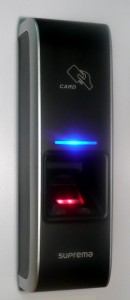 Want to know a secret? (Of course you do.) Wireless locks can totally overwhelm the buyer.
Want to know a secret? (Of course you do.) Wireless locks can totally overwhelm the buyer.
Shocker, right?
There are so many components and options that if I hadn’t gotten the inside scoop from some pretty knowledgeable electromechanical technicians, I would probably curl up in a ball and demand simple bicycle locks on all of my facility doors.
Now that I’m educated on the topic though, I can pass along the info to you.
For that reason, I thought it would be a good idea to break down wireless locks into some basic information to help get you started.
Wireless Locks: The Basics
First things first, you need to know how many wireless locks you need. The amount of locks you need will tie into the number of hubs you need. Typically, anything with more than eight locks will require more than one hub.
A hub is like a WiFi router. The difference between a wireless lock hub and your basic WiFi router, though, is that a hub is designed to pair on a specific frequency with a set number of locks that use the same frequency.
One of the biggest worries with wireless locks is the amount of chatter will cause issues when the lock tries to communicate with the hub. The ability for the hub to be located on a different frequency really reduces that possibility.
Next consider the credentials you want people to use to access your facility. There are options that range from badges to codes and, in the future, the use of biometrics as an option in credentials will become more widespread. You also get the option of audit trails with some wireless locks so that’s one more thing to consider.
Generally, all credentials are stored on a server, and this allows the lock to validate aforementioned credentials in the same spot. Many times, you’ll hear people refer to the wireless locks “control room.” Contrary to popular belief, the control room isn’t some top-secret room filled with high tech computers. Nope. It’s just a server.
The lock sends the message to the hub which transfers the message to a controller which, in return, sends the message to the control room.
With wireless locks, comes a lot of tech-speak which can easily turn some people off, but when the steps are broken down, they aren’t so scary.
Have you thought about wireless lock installation at your facility? Have any questions we can help with?
We have an entire team ready to answer any questions you might have, so give us a shout.

Great blog! You are absolutely correct that wireless access systems can be confusing and a little daunting. We work on them everyday and can be overwhelmed at times. Luckily, the technology is getting better and better. They even have some new products coming out that can piggy back off of your current WiFi system!
Great post Whitney. If it’s alright with you, I would like to re-blog this on our site.
Hi, Brett! Thanks so much for the comment!
I’d be more than happy to write a guest blog about wireless locks for you. I’ll contact you via email and we can work out the details.
Thanks for reading!
What type of clients should I pitch this to? Is it good for hotel and Bed and Breakfast clients or are there other applications? Thanks!
Hi Rudy!
Hotels and B&Bs are definitely an excellent application for wireless locks. We’ve also installed them in facilities such as banks, dormitories, and offices. It really depends on what the client wants their locking system to achieve.
For instance, if they need to be able to immediately put the facility on lock down, wireless locks may not be the best option since there will be a slight time delay between when the lockdown is activated and when the signal is sent to the locks